Rapid Relief Strategies for Cold Sores on Lips
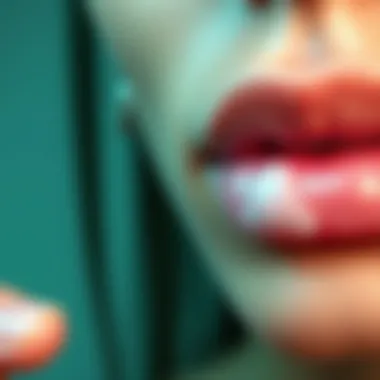
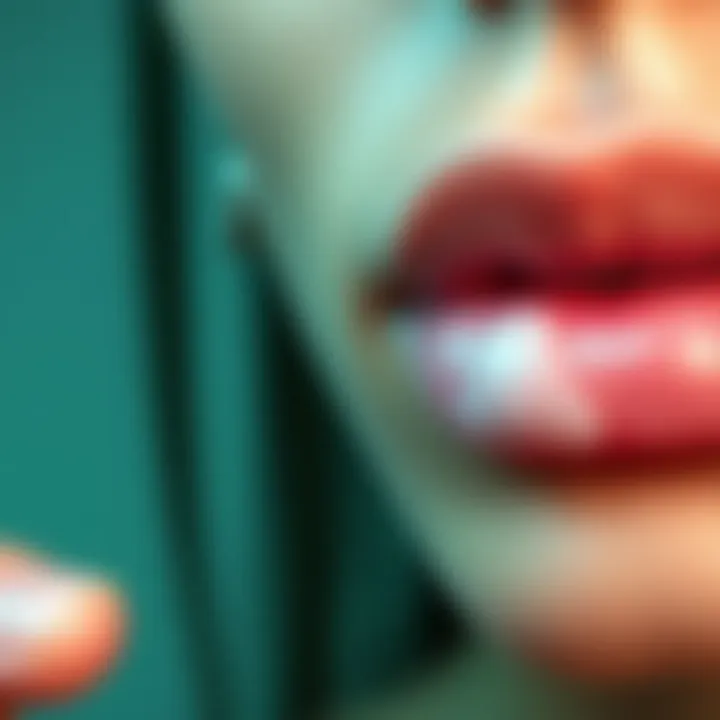
Intro
Cold sores can be a real thorn in the side for many individuals, popping up uninvited and causing discomfort. Knowing the ins and outs of fast relief strategies is crucial, especially considering their unpredictable nature. These pesky blisters, primarily caused by the herpes simplex virus, can appear during times of stress, illness, or even when the weather takes a turn.
Understanding the road to recovery doesn't end with just treatments; it encompasses early intervention, a good grasp of the underlying factors, and a pinch of preventive measures. It's not just about getting rid of those unsightly sores, but also about embracing an overall strategy to keep them at bay.
This guide will unfold various effective options for relief—from reliable topical treatments to handy home remedies. We'll explore how lifestyle tweaks can help you dodge those unwanted outbreaks like a pro. Ready to arm yourself with knowledge and take control of your health? Let’s delve into the benefits of mastering these strategies.
Understanding Cold Sores
Cold sores can be a real nuisance, sprouting up when you least expect them. Understanding cold sores is pivotal because it sets the groundwork for effective management and relief strategies. This knowledge not only empowers individuals with the ability to recognize and respond to symptoms early but also highlights ways to prevent future outbreaks. After all, who wants to face the embarrassment of a cold sore, especially when social events roll around?
Definition and Causes
At the core, cold sores are small blisters caused by the herpes simplex virus (HSV), predominantly HSV-1. They typically appear on or around the lips but can also show up in other areas of the face. The appearance of these sores can be disheartening, as they usually itch and burn before they become visible. Most importantly, after the initial infection, the virus remains dormant in the body, waiting for the right moment to strike again.
Various causes contribute to the emergence of cold sores:
- Initial Infection: Most people contract the virus during childhood through casual contact, such as a kiss from an infected family member.
- Reactivation Triggers: A host of factors can reactivate the dormant virus, including stress, illness, fatigue, hormonal changes, or exposure to sunlight. Stress tends to be a major culprit, sometimes turning a simple cold sore into a significant source of difficulty.
How the Virus Spreads
Cold sores are contagious, and understanding how they spread is crucial for prevention. The virus is primarily transmitted through direct contact with an infected person during an outbreak. This can happen via:
- Skin to Skin Contact: If you touch an active sore and then touch another part of your body or someone else's, you can spread the virus.
- Shared Items: Utensils, lip balm, or towels used by an infected person can also be sources of transmission, even before the sores become visible.
Additionally, many individuals may not realize they are contagious, as symptoms can sometimes be mild or even absent altogether. This emphasizes the need for caution in shared settings—if you suspect that someone has a cold sore, it’s best to maintain a safe distance.
Triggers for Outbreaks
Recognizing the triggers that can bring about a cold sore outbreak is a significant step in prevention. While these triggers can vary from person to person, some common ones include:
- Stress: Emotional and physical stress can lower the immune response, making it easier for the virus to emerge.
- Illness and Fever: Conditions that weaken the body, including the common cold or flu, can activate the virus.
- Hormonal Changes: Many women notice increased outbreaks during menstruation or pregnancy, as hormonal fluctuations can impact immune response.
- Sun Exposure: Prolonged sun exposure can lead to an outbreak, making sunscreen or protective balm essential when outdoors.
Understanding these factors not only helps individuals manage their risk but also aids in crafting personal strategies to minimize the likelihood of outbreaks in the future. Incorporating these facets into a proactive health routine can make a world of difference.
"Knowing your enemy (the virus) is half the battle won." – A proactive approach can help curtail the impact of cold sores.
Recognizing Early Symptoms
Recognizing the early symptoms of cold sores is crucial in managing their impact effectively. Identifying those initial signs enables individuals to take swift action, ultimately reducing the duration and severity of an outbreak. These early indicators serve as a warning bell, urging one to implement effective treatment strategies before the virus develops fully. Cold sores, also known as fever blisters, often come with identifiable symptoms that, if acknowledged in time, can lead to quicker recovery.
Initial Signs to Watch For
The first signs of a cold sore usually emerge days before the noticeable blister appears. Recognizing these symptoms can make a world of difference:
- Tingling Sensation: Often described as a prickling or itching feeling, this is usually the first signal of an impending outbreak. It can occur on the lips or even around the mouth.
- Redness and Swelling: The affected area may become red and slightly swollen, indicating that the virus is at play.
- Pain or Sensitivity: Some might experience discomfort or heightened sensitivity in the area. Ignoring this phase can lead to more extensive pain once the sore appears.
- Fever and Fatigue: In some cases, a person may also feel unwell, experiencing mild fever and fatigue. While this isn't universal, paying attention to changes in your health can provide additional context for what's happening.
By being cognizant of these signs, individuals can initiate treatments such as topical antivirals or home remedies before the sore fully breaks out.
Stages of Cold Sore Development
Once the early signs have been identified and the cold sore begins to develop, understanding its stages can help prepare individuals for what’s to come. The life cycle of a cold sore typically involves the following stages:
- Initial Tingling and Itching (Prodromal Stage): This early phase is characterized by tingling and discomfort, as previously mentioned. Immediate action during this stage can prevent the blister from forming.
- Blister Formation: Within 24-48 hours, small fluid-filled blisters appear. This is when the sore is most contagious. At this point, starting topical treatments can effectively shorten recovery.
- Weeping/Ulceration: As time progresses, the blisters may burst, causing pain and oozing. This stage is often alarming and can be quite uncomfortable.
- Crusting and Healing: Eventually, the fluid dries up, forming a crust. This stage generally marks the end of the outbreak, although it can be itchy and may cause discomfort.
- Complete Healing: The final stage is when the crust falls off, and the skin heals completely. By now, proper care can minimize scarring and promote healing.
Remember: Early intervention is key. Recognizing initial symptoms and understanding the stages of development offers a strategic advantage in managing cold sores effectively.
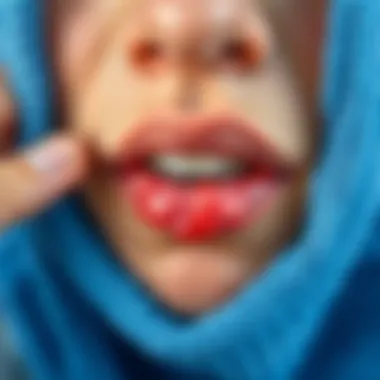
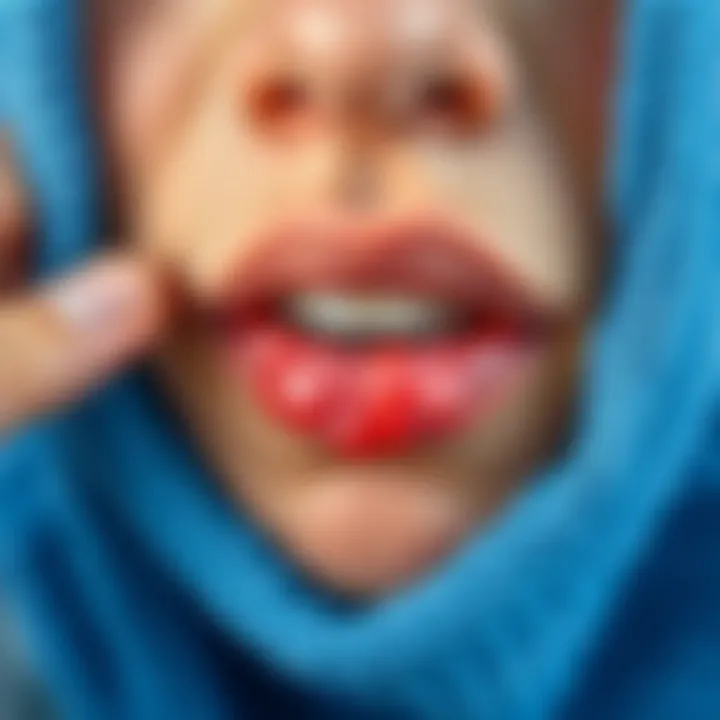
Importance of Early Treatment
Recognizing the critical role of early treatment is paramount when dealing with cold sores. Acting promptly upon noticing the initial symptoms can shape the trajectory of an outbreak. Cold sores, caused mainly by the herpes simplex virus, can become a recurrent annoyance for many. Consequently, understanding the nuances of timely intervention can significantly enhance outcomes, not only in alleviating pain but also in keeping future outbreaks at bay.
Benefits of Timely Intervention
Taking action early can lead to rapid relief from the bothersome symptoms that come with cold sores. Here are some noteworthy benefits of addressing cold sores swiftly:
- Shortened Duration: When treatment begins in the prodromal stage—often characterized by tingling or itching—outbreaks can be considerably curtailed. This can save you precious days of discomfort.
- Reduced Severity: Effective treatment at early signs may diminish the severity of the outbreak. A cold sore that could have blossomed into an angry blister might only pucker slightly, offering a more manageable experience.
- Less Contagion Risk: The sooner you intervene, the more you minimize the chance of spreading the virus to others. Early treatment means that you are less likely to shed the virus in heightened amounts.
"Act fast, and you might just dodge a bullet. Early treatment for cold sores is like having an umbrella in a sudden downpour."
Overall, the faster the response, the more control you have over the social and physical discomfort that cold sores can impose.
Consequences of Delayed Treatment
Letting the symptoms linger without intervention can have tangible repercussions. It is easy to bury one’s head in the sand and hope for the best, but here’s what can potentially unfold when treatment is procrastinated:
- Prolonged Pain: Ignoring a cold sore in its infancy often leads to a longer healing process. Instead of treating quickly, you might find yourself nursing a sore that takes its sweet time to heal, causing unnecessary distress.
- Increased Frequency of Outbreaks: Failing to manage outbreaks effectively can pave the way for increased frequency. If your immune system continually gets a jolt from not treating the sores quickly, you could inadvertently enhance the likelihood of future occurrences.
- Higher Risk of Secondary Infections: An untreated cold sore may also attract bacteria, leading to a secondary infection. This can complicate what is basically a skin condition into something requiring more intensive treatment.
- Emotional Impact: The social stigma associated with cold sores shouldn’t be overlooked. Extended healing times can lead to feelings of embarrassment, anxiety, or withdrawal from social situations. This turmoil compounds the physical symptoms and prolongs the distress.
Topical Treatments for Quick Relief
Topical treatments are a cornerstone in the arsenal against cold sores, giving individuals a proactive approach to managing an outbreak. These therapies can provide immediate effects, addressing the discomfort while also promoting healing from the inside out. When dealing with the unforgiving nature of the herpes simplex virus that causes cold sores, identifying effective topical remedies can be a game-changer. It's not just about alleviating symptoms; it’s about taking charge of one's health and well-being.
Over-the-Counter Options
Among the options available, over-the-counter treatments are a go-to for many. They are easily accessible and often come with the endorsement of dermatological professionals. Key products typically include:
- Docosanol Cream: This topical mainstay interrupts viral replication. Applying it at the first tingling sensation may shorten the duration of the outbreak.
- Aloe Vera Gel: While primarily known for its soothing properties, it also acts as a moisturizer and can keep the area hydrated. This can lessen the painful dryness associated with cold sores.
- Lysine Creams: Often touted for their antiviral properties, lysine has been shown to reduce the frequency of outbreaks when applied topically.
These treatments are usually well-tolerated, but they come with a few considerations. Read labels and ensure that ingredients align with personal needs, particularly if sensitive skin is an issue.
Prescription Treatments
When over-the-counter solutions don’t cut it, prescription medications provide a deeper level of intervention. Healthcare providers may recommend treatments such as acyclovir or valacyclovir, often in cream form, that significantly cut down healing time and reduce the viral load at the site of infection. These medications can also help prevent subsequent outbreaks when taken prophylactically.
Benefits of prescription treatments include:
- Faster Healing: Studies show that prescription antiviral creams can reduce the duration of cold sore symptoms by a few days compared to over-the-counter options.
- Reduced Severity: Regular use of antiviral medications can lessen the severity of outbreaks in individuals with recurrent infections.
However, it's crucial to consult a healthcare provider before starting any new medication. Potential side effects and interactions with other medicines need careful consideration.
Application Techniques for Effectiveness
Even the best topical treatments yield little benefit if not applied correctly. Here are some techniques to maximize effectiveness:
- Clean the Area First: Use mild soap and water to cleanse the lips and surrounding area. Keeping it free from dirt and bacteria ensures better absorption of the medication.
- Use a Clean Applicator: If the treatment comes in a tube or jar, employing a cotton swab can help avoid transferring additional germs.
- Apply Sparingly and Consistently: A thin layer is usually sufficient. Applying more than necessary is not only wasteful but may lead to skin irritation.
- Follow up Regularly: Adhering to the treatment schedule is paramount. If instructed to apply four times daily, sticking to that timetable enhances healing.
"Consistency is key in any treatment plan — be diligent, and you’ll often see the results you desire."
Each method, whether it's an over-the-counter option or a prescription treatment, requires respect for application techniques. Accurate usage will not only improve results but may also build confidence in personal health management strategies.
Home Remedies and Natural Approaches
Home remedies and natural approaches play a vital role in addressing cold sores, not only for their accessibility but also for their potential effectiveness. Often, these remedies utilize items readily available in our homes or easily found in nature, offering swift relief without the need for prescription medications. Their appeal lies in a holistic view of health—tackling the discomfort associated with cold sores while also considering the overall well-being of the individual. In our quest for efficient strategies, it’s imperative to explore how these methods can serve as practical adjuncts to medical treatments and preventive strategies.
Common Household Items
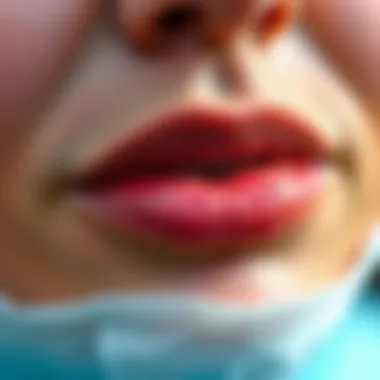
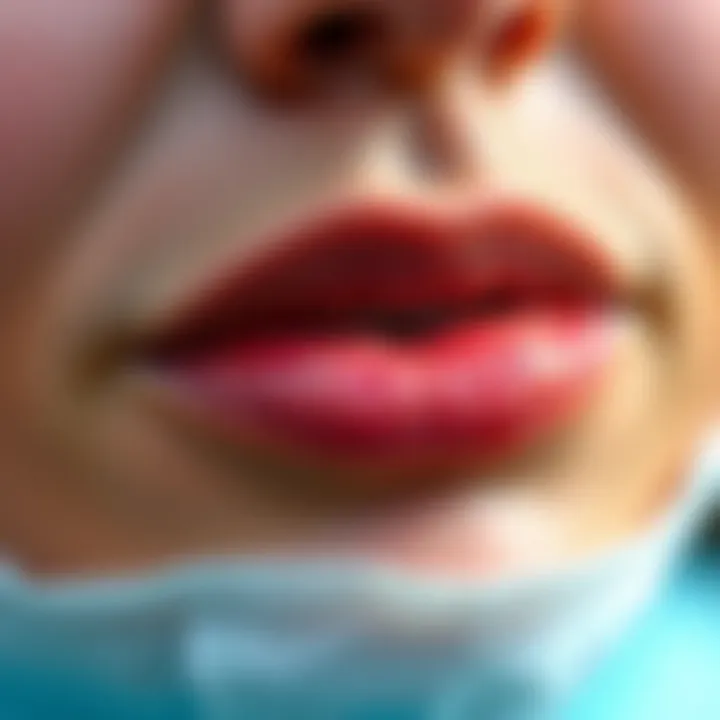
Many common household items harbor properties that can soothe the pain and discomfort of cold sores. Here are a few notable examples:
- Honey: Not only is honey a sweet addition to tea, but it has proven antiviral properties that can aid in the healing process when applied topically. Its thick texture allows it to coat the sore, providing a natural barrier to irritants.
- Ice or Cold Compress: Applying ice wrapped in a cloth to the affected area can help numb the pain and reduce swelling. The cold also slows down blood flow, minimizing the redness and discomfort for a short period.
- Tea Bags: Used tea bags, particularly green or chamomile, contain tannins that have anti-inflammatory properties. Place a cooled, used tea bag directly on the sore for relief.
- Aloe Vera: Known for its soothing effects, aloe vera gel can provide an excellent natural remedy. Simply apply the gel from the leaf directly to the cold sore to help alleviate discomfort and promote healing.
Using these items can bring quick relief and demonstrate a resourcefulness that is often overlooked in our highly commercialized environment. Each item varies in effectiveness per individual preferences and responses, so people may have to experiment to see which offers them the best results.
Herbal Remedies and Their Benefits
Herbal remedies offer a rich array of options for those seeking relief from cold sores. These natural treatments not only help alleviate symptoms but may also boost the body's healing capabilities. Here are some noteworthy herbal options:
- Lemon Balm (Melissa officinalis): As an effective antiviral, lemon balm extract can minimize the duration and severity of outbreaks. Applying lemon balm cream several times a day can lead to significant improvement in symptoms.
- Licorice Root: This herb contains glycyrrhizin, which boasts antiviral and anti-inflammatory properties. A tea made from licorice root may support immune function and direct healing of cold sores when consumed regularly.
- Peppermint Oil: With its cooling sensation, peppermint oil can both alleviate pain and fend off virus replication. Diluting the oil with a carrier, like coconut oil, can create a soothing topical treatment for cold sores.
- Echinacea: Combining echinacea with other natural treatments can enhance immune responses. Taking it as a supplement or in tea form may help prevent the frequency of outbreaks.
It's important to note that while many find relief from these herbal remedies, results can vary. Therefore, a blend of caution and curiosity will serve individuals best as they explore these natural options.
"The wisdom of the natural world provides astonishing alternatives. With the right approach, healing might be closer than you think."
Balancing conventional treatments with these homemade approaches may equip individuals with a broader toolkit to combat cold sores, reinforcing the importance of a proactive stance while nurturing one's health naturally.
Preventive Measures to Consider
Taking the right preventive measures can be the key to managing cold sores effectively. Cold sores, brought on by the herpes simplex virus, are often triggered by various external and internal factors. By understanding what these factors are and implementing changes in lifestyle and habits, individuals can reduce the number of outbreaks, or even prevent them altogether.
Lifestyle Adjustments
Making simple yet effective lifestyle changes is crucial in minimizing the chances of cold sores. Here are several steps to consider:
- Stay Hydrated: Dehydration can make your skin more susceptible to breakouts. Drinking plenty of water can help maintain skin health and resilience.
- Balanced Diet: Eating a variety of fruits, vegetables, whole grains, and proteins provides the body with necessary nutrients. Foods rich in vitamins C and E, along with zinc, are known to bolster the immune system. Incorporate foods like citrus fruits, nuts, and green leafy vegetables.
- Regular Exercise: Engaging in physical activity boosts the immune system, reduces stress, and improves blood circulation. Even a daily walk can do wonders for your overall health.
- Adequate Sleep: Lack of sleep can lead to hormonal imbalances and increased stress, both of which can trigger cold sore outbreaks. Aim for at least seven to eight hours of quality sleep each night.
"An ounce of prevention is worth a pound of cure."
Being proactive about your health can go a long way in preventing uncomfortable cold sore flare-ups.
Avoiding Known Triggers
Certain environmental and behavioral triggers can set off cold sores. Recognizing and avoiding these triggers can significantly reduce the likelihood of outbreaks. Here’s a closer look at some common triggers:
- Sun Exposure: Excessive sun exposure can lead to cold sores. Use sunscreen on your lips whenever you’re outside. Lip balms containing SPF can offer good protection.
- Stress: Emotional and physical stress can compromise the immune system. Consider integrating stress management techniques such as meditation, yoga, or deep-breathing exercises into your routine.
- Illness: A cold or the flu can pave the way for a cold sore outbreak. Keeping your immune system strong can help you fend off these infections.
- Hormonal Changes: Fluctuations during menstruation or pregnancy can trigger cold sores. Monitoring these changes can help you prepare and preemptively act if you're prone to outbreaks during these times.
By taking these preventive measures seriously, individuals can be armed with practical strategies that not only help in managing their condition but also foster an overall sense of well-being. Knowledge and preparation pave the way to a cold sore-free existence.
Diet and Nutrition's Role
When considering how to tackle cold sores effectively, one cannot underestimate the influence of diet and nutrition on our immune system. The body's ability to fend off the herpes simplex virus that causes cold sores is, in part, dictated by the nutrients we consume. Adopting a well-balanced diet can play a pivotal role in both preventing outbreaks and speeding up recovery. Here, we will explore essential foods and nutrients that contribute to a robust immune response, helping individuals navigate this common ailment more effectively.
Foods That Support Immune Function
Eating the right foods can be a game changer in supporting immune function. A variety of options exist:
- Citrus Fruits: Oranges, lemons, and grapefruits are rich in vitamin C. This vitamin is well-known for its role in boosting the immune system and may facilitate faster healing of cold sores.
- Yogurt: Packed with probiotics, yogurt helps maintain gut health, which is crucial for overall immune function.
- Green Leafy Vegetables: Spinach and kale are loaded with vitamins A, C, and E, along with antioxidants that combat oxidative stress and support immune response.
- Nuts and Seeds: Almonds, sunflower seeds, and walnuts provide vitamin E and essential fatty acids that help reduce inflammation.
- Garlic: Known for its antiviral properties, garlic can enhance immune function and potentially ward off cold sore outbreaks.
Incorporating these foods into daily meal planning isn’t just a smart way to nourish the body; it's like fortifying a castle against invaders. A strong immune system stands ready to fight off potential outbreaks or minimize their impact if they do occur.
Nutrients to Focus On
It's not just about the what you eat but also the specific nutrients your body needs to function at its best:
- Vitamin C: Key for immune defense. Aim for 75 mg for women and 90 mg for men daily. Foods dense in this vitamin include bell peppers, strawberries, and broccoli.
- Zinc: Important in the healing process; it also has a role in immune cell function. Sources include meat, shellfish, legumes, and seeds. A daily intake of around 11 mg for men and 8 mg for women is recommended.
- B Vitamins: Especially B6 and B12, play a role in producing immune cells. You can find these in whole grains, animal proteins, and legumes.
- Vitamin D: Regulates the immune response and helps protect against viral infections. Many people don’t get enough, especially those who live in less sunny climates. Foods such as fatty fish and fortified dairy products are good sources.
- Omega-3 Fatty Acids: Found in fish like salmon and flaxseeds, these fatty acids can help reduce inflammation and support overall health.
"Let food be thy medicine and medicine be thy food." - Hippocrates
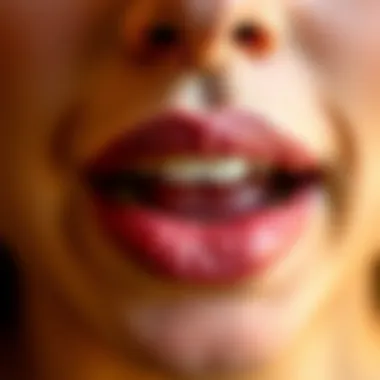
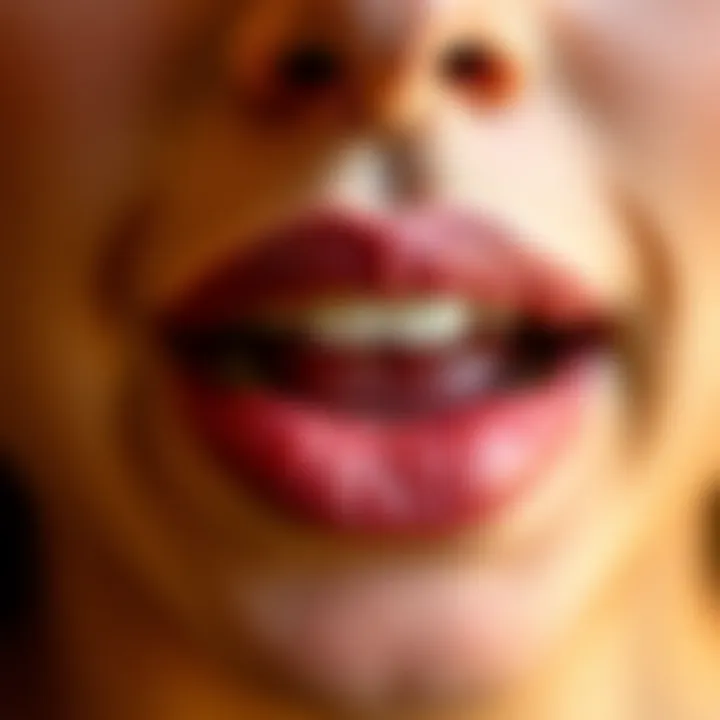
For more in-depth information about cold sores and their management, you can refer to sources like Healthline or the American Academy of Dermatology.
Impact of Stress on Cold Sores
The relationship between stress and the emergence of cold sores cannot be overlooked. Chronic stress can take a toll not just on mental health, but also on physical wellbeing, manifesting in various ways, with cold sores being a prominent concern for many. Understanding this connection can empower individuals to adopt strategies that minimize both stress levels and the likelihood of outbreaks.
Understanding Stress's Role
Stress triggers a series of physiological responses that can weaken the immune system. When the body is under pressure—be it from work, personal life, or even environmental factors—it produces hormones such as cortisol. High levels of cortisol, while occasionally beneficial in short bursts, can lead to inflammation and lower the body’s defenses against viruses like herpes simplex. This virus, the culprit behind cold sores, often seizes the opportunity presented by a stressed state, waiting for a moment when the body is less vigilant to strike.
Furthermore, emotional stress can lead to changes in habits that may exacerbate conditions that contribute to outbreak frequency, such as poor diet, lack of sleep, or neglecting proper skin care. Realizing that stress is not just a fleeting feeling, but a legitimate factor in physical ailments, places a crucial responsibility on individuals to be proactive in managing their stress.
Stress Management Techniques
Incorporating effective stress management techniques into one’s lifestyle can significantly mitigate the risk of developing cold sores. Here are some strategies that are worth considering:
- Mindfulness and Meditation: Practicing mindfulness helps create a mental space where stress impacts can be reduced. Regular meditation can shift focus and promote relaxation, making it less likely for the virus to activate.
- Physical Activity: Engaging in regular exercise not only boosts the immune system but also releases endorphins, chemicals in the brain that act as natural painkillers and mood lifters. This dual benefit can be pivotal in keeping cold sores at bay.
- Adequate Sleep: Sleep is often stolen by stress, but it's vital for recovery and resilience. Prioritize a sleep schedule and create a restful environment to support better sleep quality.
- Herbal Supplements: Some individuals find relief in natural remedies, such as chamomile or lavender, which are known for their calming properties. They can either be consumed as teas or used in aromatherapy.
- Social Support Systems: Maintain connections with family and friends. Sharing feelings and experiences can be cathartic and help alleviate mental burdens. Forming a supportive community is instrumental in navigating stressful periods.
"Stress management isn't just about relaxation; it’s about adopting a lifestyle that protects your overall health."
Each of these techniques not only aims to reduce stress but also contributes positively to overall health. By prioritizing stress management, individuals can bolster their immune response and reduce the likelihood of cold sore outbreaks that plague many during times of heightened anxiety.
When to Seek Professional Help
Cold sores, though common, can sometimes spiral into uncomfortable and concerning territory. Recognizing when to reach out for professional guidance is crucial for managing outbreaks effectively. Ignoring the severity of cold sores can lead to complications, extended discomfort, and more intensive treatments. Professionals, being equipped with a wealth of knowledge and resources, can significantly alter the course of treatment and recovery.
Recognizing Severe Outbreaks
Not all cold sore outbreaks are created equal. It's important to be vigilant about the signs that warrant medical attention. If you notice any of the following indicators, it might be time to consult a healthcare provider:
- Persistent Pain: If the pain from the sore lingers beyond the usual timeframe or becomes unbearable, this could signify an issue that needs addressing.
- Worsening Symptoms: An increase in redness, swelling, or the formation of multiple sores may escalate your condition.
- Fever or Flu-like Symptoms: Concurrent symptoms like fever, fatigue, or swollen lymph nodes can indicate that the virus is affecting you more severely than anticipated.
- Recurring Outbreaks: If cold sores recur frequently, it could be a sign of an underlying health issue that a healthcare professional should assess.
- Difficulty Eating or Drinking: If the sores hinder your ability to consume food or fluids, professional help is imperative to avoid dehydration.
Recognizing these signs early can help avoid complications, as timely intervention by a healthcare professional may also provide access to antiviral medications that can speed up recovery.
Long-term Management Options
Professional help doesn't stop at treating the immediate outbreak. It’s also about managing recurring incidents effectively and reducing their frequency. Here are some long-term management strategies that health professionals might suggest:
- Antiviral Medications: Prolonged antiviral treatments may be necessary for individuals with frequent outbreaks. Physicians can prescribe medications like acyclovir or valacyclovir to help minimize the frequency and severity.
- Regular Check-ups: Scheduling periodic appointments with a dermatologist or primary care physician ensures proper monitoring and adjustments to treatment as needed.
- Comprehensive Care Plans: Professionals may recommend lifestyle changes, including stress reduction techniques, better diet plans, and proper skincare routines, which can all contribute to fewer outbreaks.
- Vaccination (in research stages): Staying updated on any developments in targeted vaccines against herpes simplex virus can be a pivotal step in prevention.
- Educating Yourself: Engaging with healthcare providers about the virus, preventive habits, and emerging therapies can empower you, allowing better control over your condition and enhancing your quality of life.
Consult a health professional if you're unsure about your symptoms or if they worsen over time. Prompt action can save you trouble in the long run.
End and Final Thoughts
When it comes to managing cold sores, understanding that efficient strategies for rapid relief are pivotal cannot be overstated. This article encapsulates several approaches that target the issue from various angles, fostering a holistic view on handling outbreaks. The importance lies not merely in battling the visible symptoms but in empowering individuals with knowledge that can shorten the duration and severity of discomfort. Recognizing early symptoms and initiating treatment promptly fundamentally changes the course of an outbreak.
Integration of both medical treatments and home remedies as discussed provides a balanced arsenal. For instance, while medications like Acyclovir can offer quick relief, natural remedies utilizing items like lemon balm or aloe vera can complement these efforts effectively. Taking a proactive stance by implementing preventive measures can spare many from these distressing occurrences.
"A stitch in time saves nine" - this saying rings true for managing cold sores as catching them early can lead to manageable outcomes.
Engaging in lifestyle adjustments, such as fostering a robust immune system through proper diet, and learning stress management can help prevent future outbreaks. The crux of efficient relief is not just about remedying the present discomfort but establishing a sustainable approach that minimizes recurrence.
Summary of Key Points
- Understanding Triggers: Identifying what leads to outbreaks helps in crafting a personal prevention plan.
- Early Intervention: Quick action can drastically reduce healing time—both prescribed and natural methods have their place.
- Importance of Immune Support: Nutritional choices play a notable part in how the body deals with the herpes simplex virus.
- Stress Management: Recognizing stress as a trigger is essential; engaging in mindfulness practices contributes to both mental and physical well-being.
- Long-Term Strategies: Knowledge is power—understanding the nature of cold sores provides the groundwork for effective management.
Encouragement for Proactive Management
It’s vital for individuals dealing with cold sores to take charge of their health. A proactive mindset isn’t just beneficial; it's liberating. Understanding that cold sore outbreaks can be anticipated opens doors to numerous strategies one can deploy. Regularly reviewing personal triggers and responses creates a tailored approach that commonly leads to better outcomes.
Consider keeping a journal to track symptoms and potential triggers. This can illuminate patterns and help refine your strategy over time. Think of it this way: the more informed you are, the better equipped you become to handle the tough days. Using both prescribed treatments and embracing home remedies can be game-changers. By merging the scientific with the natural, you arm yourself with multiple angles of attack.
Nurturing an environment that minimizes stress and boosts immunity is equally paramount. This effort translates to a lifestyle that doesn’t just react to cold sores but actively keeps them at bay. To sum up, the journey from understanding to proactive management can transform how one experiences cold sores, and by extension, life itself.
For more information on cold sore management, visit CDC or explore the World Health Organization for valuable insights.















